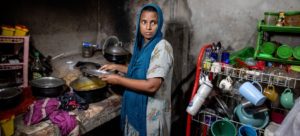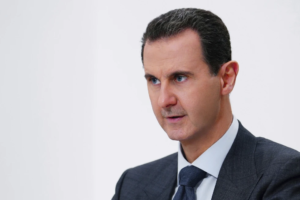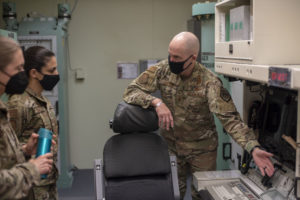Beautiful Southern Lebanon could have been tourist center, like Italy or Greece, but Hezbollah destroyed it.
The BBC recently reported on southern Lebanon where it said it saw “air strike destruction in deserted towns.” The report sought to downplay the role Hezbollah has had in bringing this disaster on southern Lebanon. However, reading between the lines, one can get a sense of how Hezbollah’s thousands of attacks on Israel since it joined the war in support of Hamas on October 8, has harmed civilian life in Lebanon.
Hezbollah is an Iranian-backed terrorist group that illegally occupies southern Lebanon and has illegally stockpiled more than 150,000 missiles and rockets. It has also acquired anti-tank missiles in the thousands and several thousand attack drones in recent years, as well as precision-guided munitions. Some of its weapons are developed locally, while other are trafficked from Iran.
Hezbollah has festooned southern Lebanon with weapons, moving them into villages and building networks of bunkers, observation posts, launch sites, and other illegal terrorist infrastructure in Lebanon. After the 2006 war, the UN and Lebanon were supposed to keep Lebanon from creating a state within a state in southern Lebanon, and returning to the border.Top ArticlesRead More
Mossad, Shin Bet, and IDF intel. issue group message for first time since Oct 7
Parts of the South are ghost towns
However, the group is exponentially more powerful today than in 2006. Similar to their blind eye to Hamas activities, the international community has sought to enable Hezbollah’s threats or pretend not to notice them.
The result of ignoring Hezbollah’s threats have now become apparent. The group began attacks on Israel on October 8 – one day after the Hamas incursion and brutal October 7 attack in Israel’s South – and has now launched thousands of missiles and rockets at Israel.
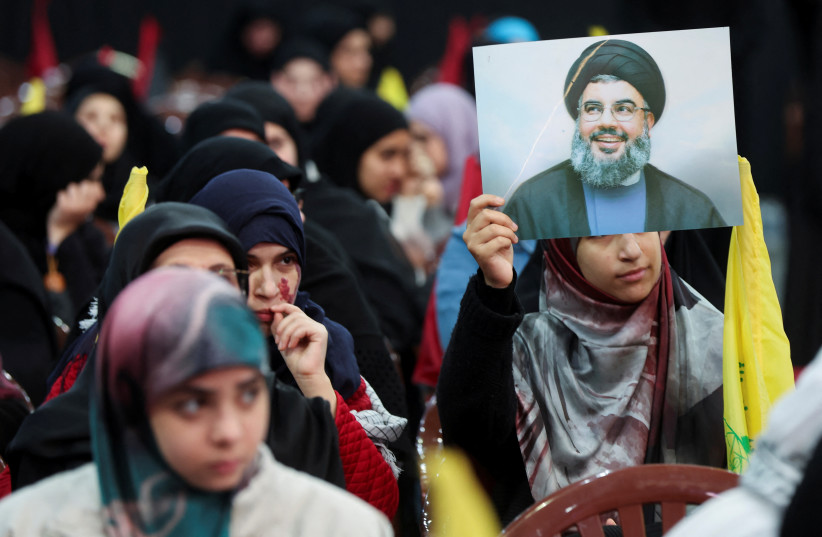
Israel has responded proportionately, often targeting Hezbollah launch sites or observation posts, meaning that, in general, Hezbollah’s fighters simply move from place to place to attack again. Hezbollah has lost some fighters, more than 200 in the six months of attacks.
The BBC report, one of the few on southern Lebanon, includes details on how Hezbollah’s war has driven civilians out of southern Lebanon. According to the report, more than 70 civilians have been killed and the conflict has turned “parts of the south into ghost towns. Residents have fled, leaving their homes at risk of destruction. The BBC went on patrol with the UN’s peacekeeping force there to see what has happened.”
The report said that “in every town near the line, there are similar sights: buildings leveled or vanished into craters; next to them, buildings which have been damaged, then rows of houses intact – followed by more craters.”
“We are paying the price”
SOUTHERN LEBANON is a beautiful and diverse area, with hills rising from the coast. It could be a tourist center, like Italy or Greece, but Hezbollah has destroyed it with checkpoints and turned the area into a military camp.
Although the UN is present in southern Lebanon and is supposed to monitor what is happening there, Hezbollah threatens the UN and has attacked its vehicles if they go off certain designated roads that Hezbollah has approved them to use.
For instance, in December 2022 five members of Hezbollah murdered an Irish UN peacekeeper named Sean Rooney. Those who go to southern Lebanon are monitored by Hezbollah and journalists are likely closely controlled by the group, and only see what it wants them to see.
Therefore the BBC report doesn’t include mention of seeing any Hezbollah members around, despite that the group carries out daily attacks on Israel. Nevertheless, the report is an insight into what Hezbollah has done to Lebanon due to its war on Israel. “In Alma el Shaab, about 4 km. west of Yarine, stand the remains of what appears to have been a gated villa with parked cars – destroyed, apart from a fence now surrounding a pile of rubble. The windows of houses nearby were all smashed from the force of the explosions,” the BBC report notes.
“We are paying the price of all of this,” a 75-year-old resident told the reporters. This means the elderly resident would have been born in the 1950s and grown up at a time before the Lebanese civil war. Lebanon was once a nice thriving state, full of diversity, with numerous Christian, Muslim, and Druze groups making up the country. However, an influx of Palestinians led to destabilization and Palestinian terrorists hijacked Lebanon to attack Israel, just as Hezbollah did decades later.
This led to a civil war. The Saudis helped end the war in 1989 but Syria occupied the country until 2005 when Hezbollah murdered former Lebanese Prime Minister Rafic Hariri. Israel left Lebanon in 2000 after almost 20 years of war there.
Instead of bringing peace, Hezbollah stockpiled more weapons and launched a war on Israel in 2006, much as Hamas would do after Israel may leave Gaza. This is the Iranian-backed plan, getting Israel to leave and then hollowing out areas and filling them with weapons and extremist groups to fight Israel.
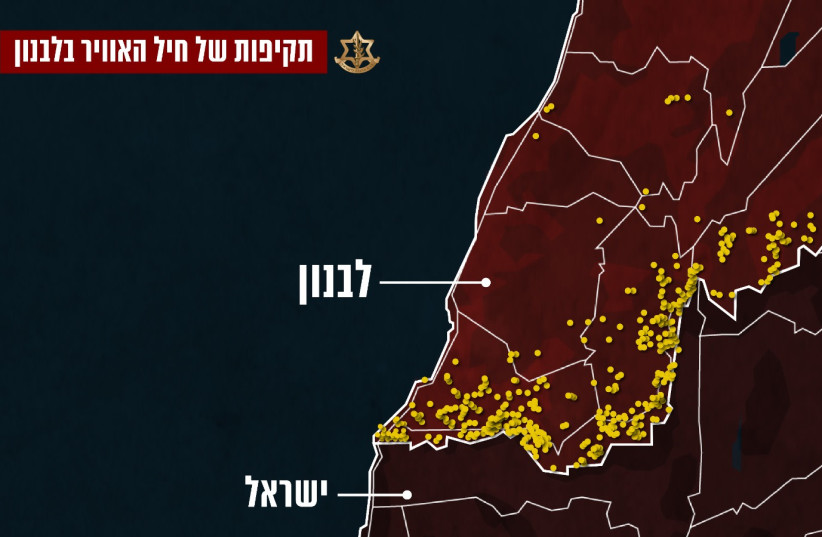
A time before Hezbollah
FOR THE elderly Lebanese, they remember a time when they were not held hostage by the PLO and then by Hezbollah. But they also know that they are paying the price for these groups that they can’t oppose. “Everything is lost, the house, the belongings, and the cars. But I will return as soon as I can, even if I were to live in a tent there,” the resident told the BBC. Lost because of a war they have no power over, hijacked by a group that they can’t control and which the UN and international organizations and world powers have foisted on them.
“Right now, there is no sign of life in many southern villages. People have fled, leaving towns deserted. About 90,000 Lebanese have become displaced, according to the International Organization for Migration (IOM). On the Israeli side, about 80,000 people have been evacuated,” the BBC notes. Israel had to evacuate the border because of Hezbollah attacks on October 8 and fears Hezbollah might try to replicate the Hamas attack of October 7.
The report goes on to note that “The Lebanese town of Aita el Shaab – just 700 m. (2,300 ft.) from Israel – has suffered the heaviest damage so far. On the day of our visit, Israel said it launched 40 strikes on the town.” It also notes that one resident who was interviewed had left the town in October, when the fighting began, and is now living near Beirut.
“We didn’t expect it all to last that long. We thought it would just be a couple of days,” a woman told the BBC. “We know it will still take a while.” According to the report there is a civil defense group that operates in these deserted towns and the mayor of the town has remained.
A UN Interim Force in Lebanon (UNIFIL) officer told the BBC, “the next challenge for the UNIFIL is to help and support the local population in returning to their homes.” It is unclear how the UN will be able to do that, especially considering that the UN has enabled Hezbollah to grow exponentially in southern Lebanon.
Hezbollah has thrived during UN presence
BASICALLY, FROM the moment the UN has been there, and certainly after 2006, Hezbollah has thrived. In essence, the international community has midwifed Hezbollah and Hamas to extraordinary power, enabling the groups to grow more powerful militarily than many small countries under the watchful eye of UN organizations and international organizations.
Israel has been systematically misled over the years about how much Hezbollah is deterred and whether Hezbollah feels impunity to attack. For instance, it appeared that the 2006 war had brought some quiet, but it now appears it is Israel that is deterred by the Hezbollah threat, rather than Hezbollah.
In the fall of 2022, Hezbollah threatened Israel with war if Israel didn’t sign a maritime deal with Lebanon that would potentially enable Qatar, which hosts Hamas, to partner on energy deals in Lebanon. At the time US envoy Amos “Hochstein said after meeting with Lebanese President Michel Aoun earlier Thursday that the agreement will create stability on both sides of the border and an economic horizon for the Lebanese people,” Axios website noted on October 27, 2022. In fact, the agreement led to instability and the current war; now 150,000 Israeli and Lebanese civilians have had to leave the border.


